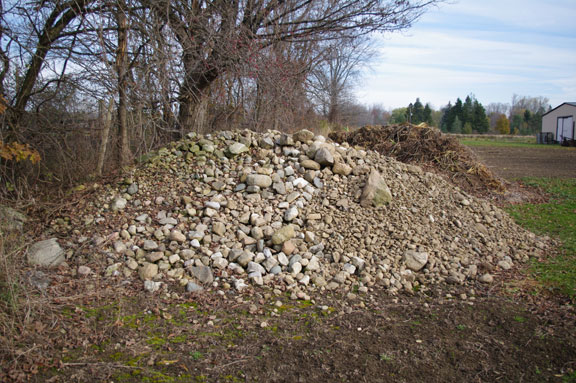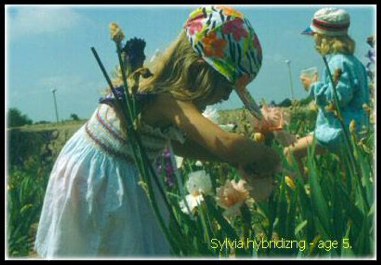Chapman Iris | home
Greetings for 2013 | About Us | Miniature Dwarf Bearded | Standard Dwarf Bearded | Intermediate Bearded | Miniature Tall Bearded | Border Bearded | Tall Bearded | Aril Bred | Beardless - Pseudacorus | Bearded - Species | Siberian | Spuria | Iris Notes | Planting Instructions | Iris Diseases | Hybridizing | Iris Terminology | Iris Awards | Special Events | Ordering Information
_______________________________________________
About Us
The garden is located just north east of Guelph Ontario in Canada. Agricultural zone is 5b by Canadian rating or about 4b by USA rating. We have 11 acres of land and about four are planted in iris with about half of this being seedlings We seem to be the most northern commercial iris growers and hybridizers of bearded iris. The soil is sandy loam and full of rocks. 
These various climate challenges sometimes result in plants being not available for shipping even when fall inventory indicated a good supply. I'm trying several new procedures to try and remedy this problem. It seems that I need two or three plantings of each cultivar to ensure that  some stock is always available even with winter losses. If there is a particular plant you would like to get but it is not listed , contact me to see if it can be supplied or obtained for you.
some stock is always available even with winter losses. If there is a particular plant you would like to get but it is not listed , contact me to see if it can be supplied or obtained for you.
 some stock is always available even with winter losses. If there is a particular plant you would like to get but it is not listed , contact me to see if it can be supplied or obtained for you.
some stock is always available even with winter losses. If there is a particular plant you would like to get but it is not listed , contact me to see if it can be supplied or obtained for you.Even with all the growing problems it all is worthwhile when the plants bloom, especially the new seedlings in exciting and new colours and improvements in other colour types. The first priority of my breeding program is climate hardiness and the second priority is new colour types. Most of my new introductions have been SDB. They are hardier then the TB so it is much easier to get new colour types that are hardy varieties. I do as much if not more work with TBs but a lot of plants are just not hardy enough in this climate. The TBs that I have introduced are very good cold climate growers. Garden Bride, a white iris, is an exceptionally strong cold climate plant and offers much potential as a parent in increasing cold weather tolerance. Garden Bride won the Loomis award in the Colorado Springs Loomis test garden in 2004 after a hard winter when many other plants didn't even bloom.
The ”Carpet”series of iris are ones that are exceptionally good garden plants.
They are easy to grow, quickly make large clumps,  produce massive number of blooms over an extended time period and can survive with little maintenance.
produce massive number of blooms over an extended time period and can survive with little maintenance.
Most of the hybridizing is done by myself but the children have also dabbled. Sylvia (18 year old daughter) has introduced a couple of plants ( Skydancer and Herbal Tea) and Jamie and George have their own seedlings and gardens.
Normally we have danfordia and Reticulata iris in bloom late March and early April. Miniature Dwarf Bearded (MDB) usually bloom about the second week of May followed about a week later with SDB (Standard Dwarf Bearded) . The very early Tall Bearded (TB) start at end of May early June and reach peak around June 15th. Siberian iris usually reach their peak about a week later. I have a large selection and planting of Spuria iris and these usually reach peak about the second week of July but can vary up to two weeks either way depending on weather. Rebloom starts with Forever Blue which usually starts its rebloom in early July and continues until mid to late October when we get heavy frosts.
The scheduled open houses are set to try and coincide with these peak times. Visitors are welcome at other times but it is best to call ahead to be sure I'll be here. You may need to search me out if you visit at times other then Open House Times, as I'm usually out working somewhere in the garden. During the open house times Jamie and George have a few iris and some other perennials potted up for sale but generally expect to get the plants when they are dug and shipped in August and September.
An interesting side note. As we collected rocks we discovered rocks that seemed to have been worked. We saved these and became more aware of them. They turned out to be very primitive Indian stone tools. We have found a number that are about 5000 years old and some that are quite a bit newer. One of the older tools seem to be a soil working tool, definitely not suited to flesh or wood. If this is the case then our plot of land had been farmed over 5000 years ago.
